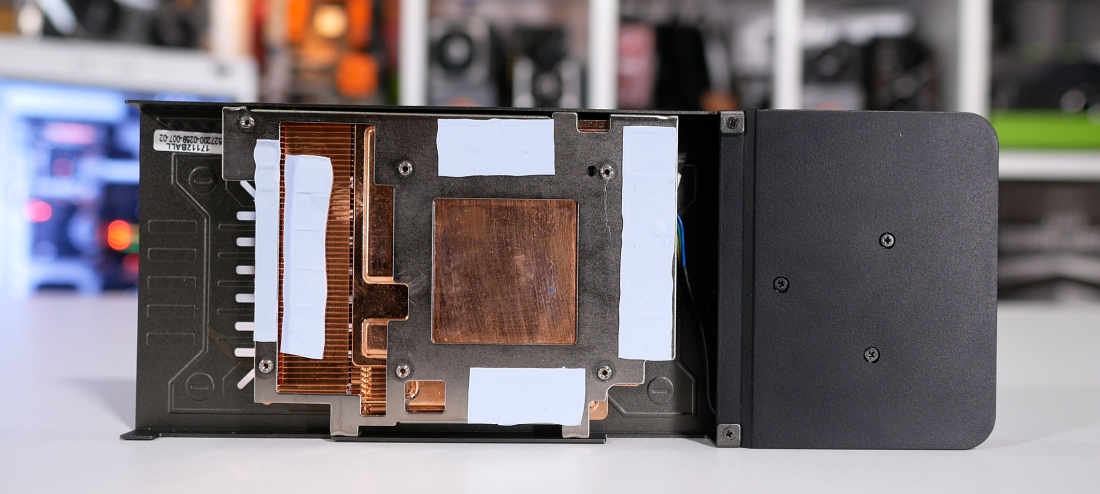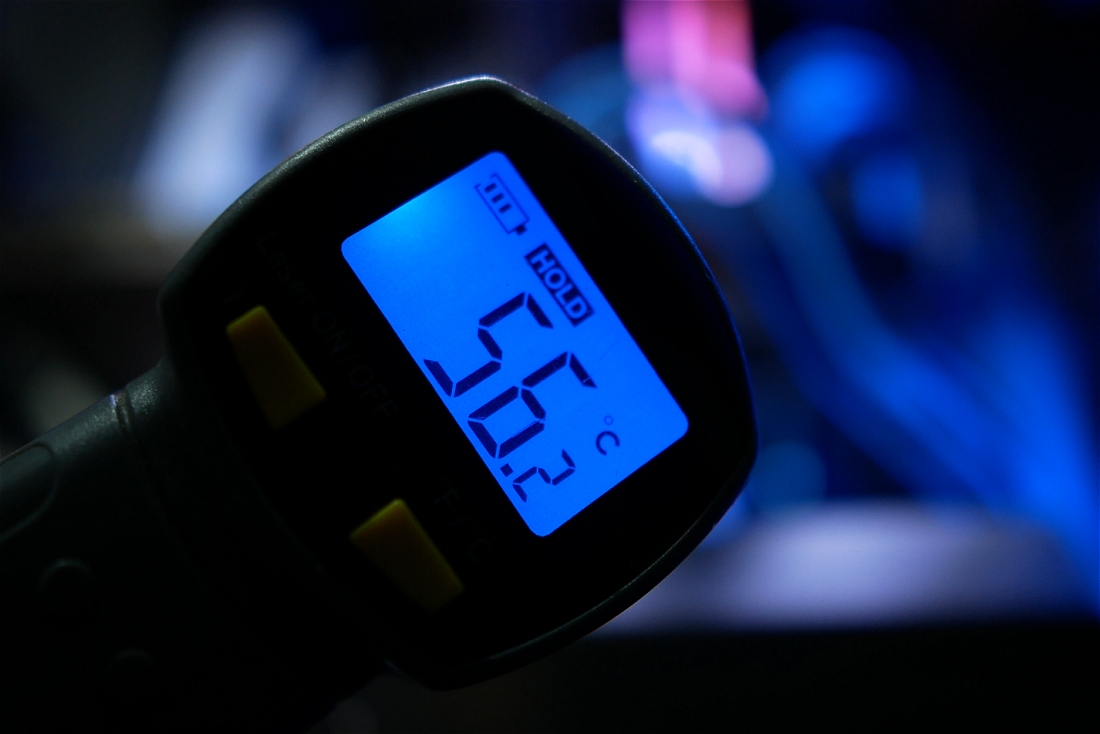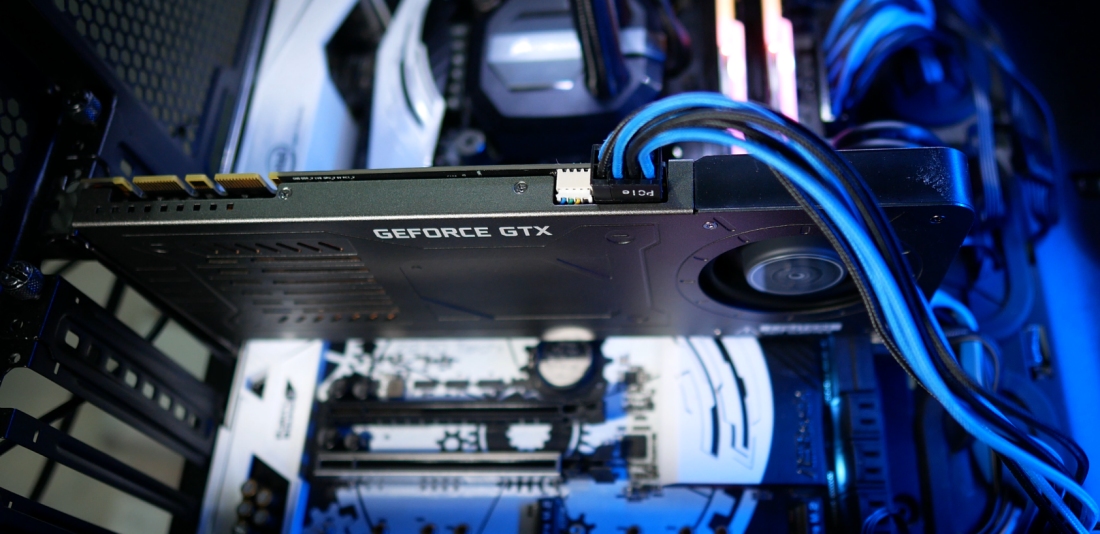Announced back in April, Galax's GTX 1070 Katana caught our attention for counting itself among the few single-slot gaming graphics cards available today. In fact, to the best of our knowledge, this is the only single-slot, air-cooled GTX 1070 in the world, as anything with a thermal design power of 75 watts or higher is typically paired with a dual-slot cooler for the added heat dissipation.
Dual-slot coolers are practical because they can handle more heat and they tend to be quieter, not to mention that desktop hardware has been designed with dual-slot graphics cards in mind for years. Taking that into consideration, you might be wondering why anyone would bother with a single-slot card at all then.
There's no doubt that this is a niche product, but it should call to compact system builders who would rather not sacrifice an additional expansion slot, which could otherwise be used for hardware such as a dedicated sound card, an NVMe SSD, a Thunderbolt 3 controller, or extra SATA ports.
This card may also become a popular choice for those building workstations with multiple high-end graphics cards because you only need a single slot between the cards for SLI support rather than the typical two slot spacing, which is to say that pair of Katana cards should deliver better operating temperatures than bigger dual-slot cards on boards such as the Asus ROG Strix Z270G Gaming or Asrock Z270M Extreme 4, for example.
Being such a special find, we knew we had to review the Katana.
As a single-slot solution, the card measures just 16mm thick. By comparison, the Palit GTX 1080 Ti that I just reviewed measured three times as wide.
While the Katana is thin, it spans a fairly long 254mm end to end, though its PCB only accounts for 67% of that total length. Covering the entire front side is a pancake-like aluminium fan shroud which has been painted gunmetal grey.
Towards the I/O end we find some cutouts in the shroud to help with cooling and at the opposite end we find a 70mm blower that pushes air over what Galax calls a 'turbo radiator', which amounts to an all-copper heatsink featuring an advanced vapor chamber.
Considering its copper construction, this component alone tips the scales at 329 grams, while the Katana weighs 603 grams in total – surprisingly heavy for a compact single-slot GPU.
Under the cooler we find a custom PCB carrying the GTX 1070 GPU and 8GB of GDDR5 memory. Galax says it used high-quality components in the card's construction, but doesn't elaborate beyond saying that it features an optimized electrical circuit.
What we found was a 4+1 VRM which is the same configuration used by Nvidia's Founders Edition model, though the VRM has switched sides and is now placed behind the display outputs. This layout allows cool air to hit the GPU section of the heatsink first before cooling the inductors, MOSFETs and capacitors of the VRM, which can happily handle higher operating temperatures. Because Galax has stuck to frequencies that are close to Nvidia's specification, they also kept the standard single 8-pin PCIe power connector.
Galax has pushed the base frequency to 1518MHz, a small increase over the stock rate of 1506MHz. This has resulted in a boost speed of at least 1708MHz, while GPU Boost 3.0 will push that even higher. When gaming, the frequency was often seen hovering around 1772MHz but did drop down to 1734MHz at times.
Galax had to sacrifice a few display outputs due to the Katana's single-slot design. Here we have just a single DisplayPort 1.4 output (it would be typical to find three of these on a GTX 1070), as well as one HDMI 2.0b and DVI-D connector. If you can put all of these outputs to use then the card supports three displays simultaneously.
On to the Benchmarks...
Our Kaby Lake Core i7-7700K test system was clocked at 4.9GHz and we tested the GTX 1070 Katana both in its default configuration as well as with a custom overclock which pushed the card to a 1719MHz base clock and 2202MHz on the memory side, or a 13% increase on the former and 10% on the latter. This overclock resulted in an actual operating frequency of 1949MHz when gaming, though we did have to force a fan speed of 80% and this made the card quite loud. Anyway, to the results...
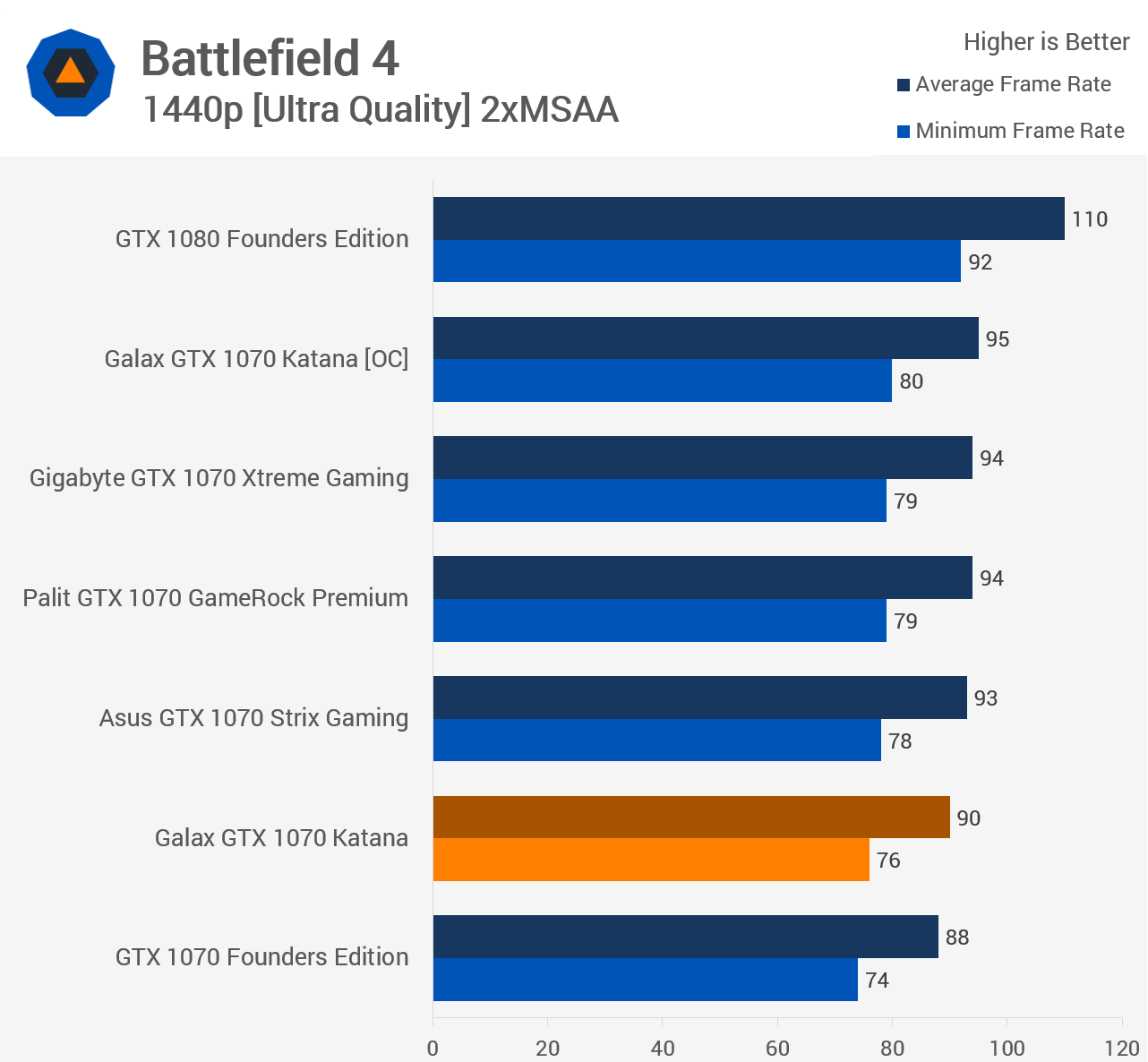
As expected, the GTX 1070 Katana was a few frames slower than the beefier dual and triple-slot 1070s from Palit, Gigabyte and Asus. That said, out of the box the performance was still respectable as the Katana sat a few frames ahead of Nvidia's Founders Edition 1070. Rendering an average of 90fps in Battlefield 4 at 1440p on ultra quality is nothing to sneeze at, especially for a single-slot card.

We found much the same in Far Cry Primal: the Katana was able to best the Founders Edition while it's just a frame or two behind the bigger partner card models. Something we've yet to point out is how well the card performs once overclocked. It's not going to beat an overclocked dual-slot card of course, but hitting 68fps in this test was impressive all the same, even if the card was a little loud.
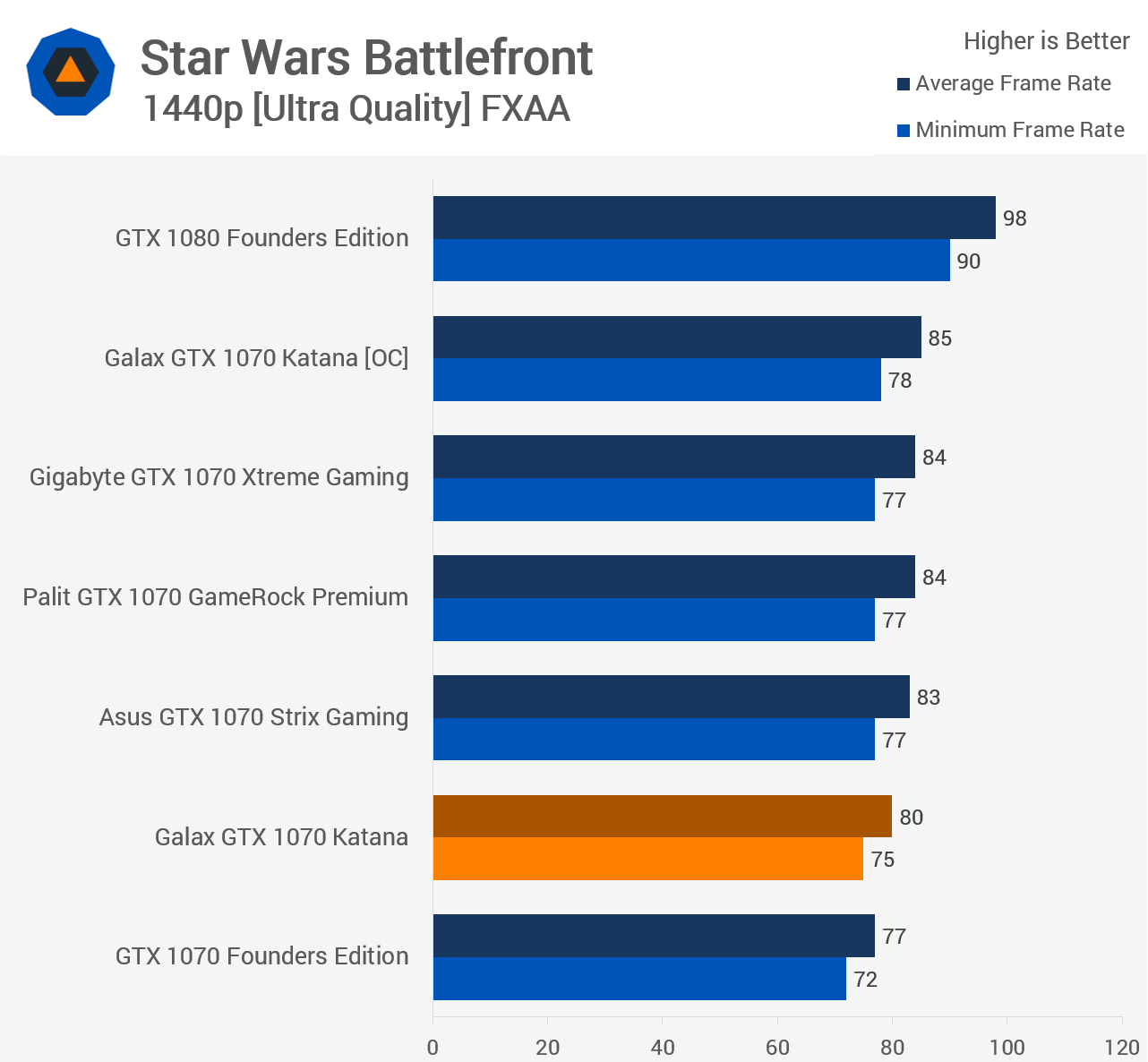
Star Wars Battlefront doesn't provide anything we haven't seen already so I'll wrap up the benchmarks here and check out the card's power consumption and operating temperatures...
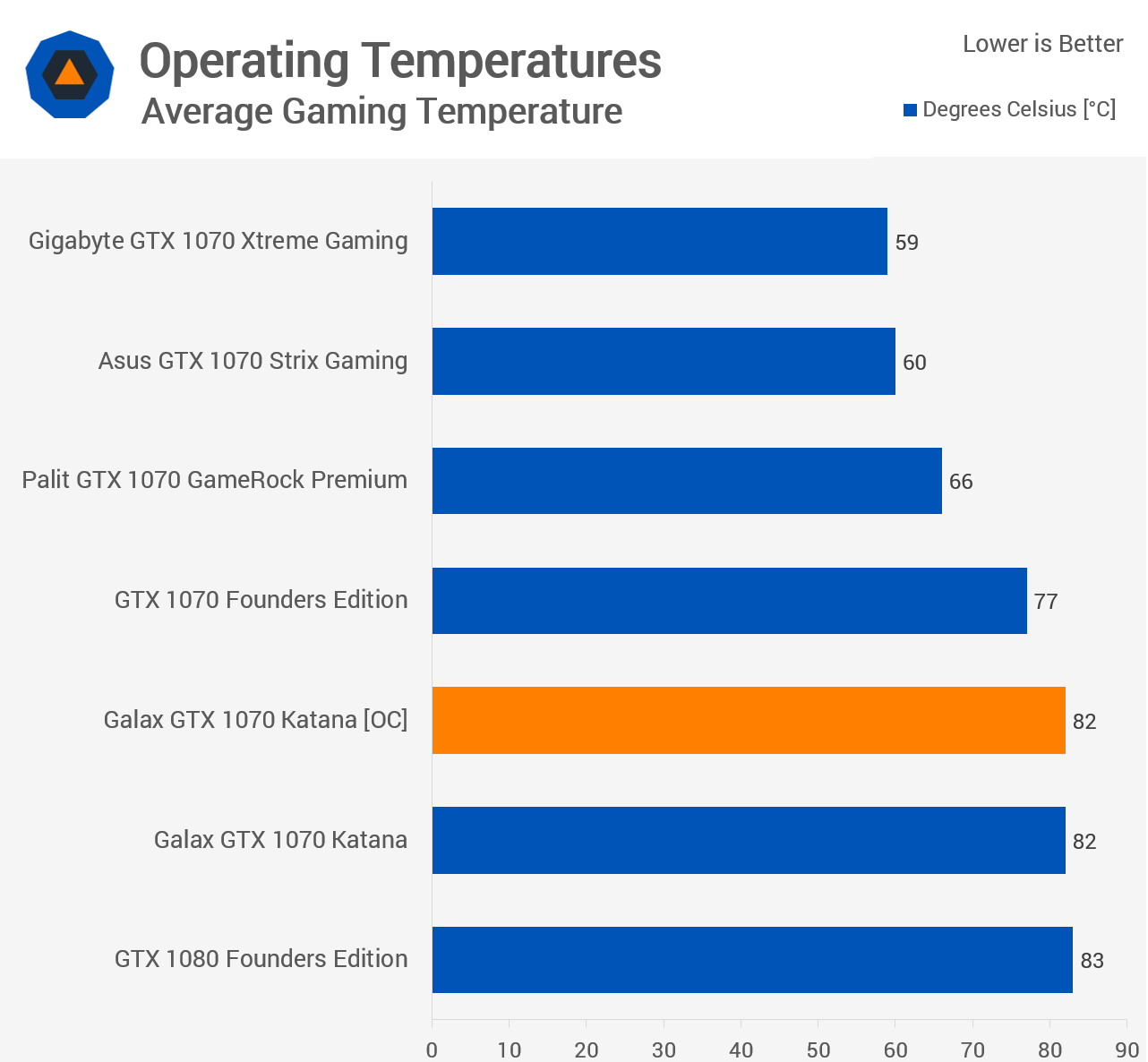
Besides thinking that it would run warmer and louder than most GTX 1070s, I wasn't sure what to expect from the Katana's performance in this category so I was pleasantly surprised by the card's 82 degree result, which was a degree under the Founders Edition card despite providing slightly better performance. Of note, the card wasn't too noisy out of the box but maintaining that 82 degrees after our overclock required us to increase the fan speed to a pretty loud setting.
For those wondering, I checked surface temperatures with an infrared heat gun and found the shroud towards the center of the card to be a surprisingly cool 44 degrees. The outlet where the hot air exits the card hit a 56 degrees.

When it came to power consumption, the Katana used only slightly more than the Founders Edition model and even once overclocked it still pulled less power than custom board partner cards out of the box.
Wrap Up
There you have it: a single-slot graphics card that still gets the job done, offering a bit more performance than Nvidia's Founders Edition GTX 1070 while running a degree cooler and occupying one less expansion slot. While we are impressed by the Galax GTX 1070 Katana, it's not a total shock to be testing a card of this nature considering they are now cramming GTX 1070 and 1080 GPUs into laptops.
Pricing is currently set at $420 when purchasing directly from Galax's US store, though that won't be easy because it's out of stock. Although the cheapest 1070s are selling for around $370 right now, this is the only single-slot 1070 you'll find, so it's hard to complain about the premium over a standard dual-slot version. Even so, once the Katana's availability improves, its price probably will too.
Overall, I found the card's operating temperature and volume to be acceptable, out of the box performance was great and the card itself looks smart. For those seeking a slim high-end graphics cards, there's simply no better choice – I guess you could say that's because there is no other choice, so fortunately this one checks out.
score
Pros: Only occupies one expansion slot and only requires one slot between two Katanas. Runs a bit cooler and faster than the GTX 1070 Founders Edition.
Cons: Operates warmer, louder and a slightly slower than custom dual-slot GTX 1070s. Pricing seems fair but is still $50 more than today's cheapest 1070s.



